Molecular mechanism for a gateway drug: epigenetic changes initiated by nicotine prime gene expression by cocaine
- PMID: 22049069
- PMCID: PMC4042673
- DOI: 10.1126/scitranslmed.3003062
Molecular mechanism for a gateway drug: epigenetic changes initiated by nicotine prime gene expression by cocaine
Abstract
In human populations, cigarettes and alcohol generally serve as gateway drugs, which people use first before progressing to marijuana, cocaine, or other illicit substances. To understand the biological basis of the gateway sequence of drug use, we developed an animal model in mice and used it to study the effects of nicotine on subsequent responses to cocaine. We found that pretreatment of mice with nicotine increased the response to cocaine, as assessed by addiction-related behaviors and synaptic plasticity in the striatum, a brain region critical for addiction-related reward. Locomotor sensitization was increased by 98%, conditioned place preference was increased by 78%, and cocaine-induced reduction in long-term potentiation (LTP) was enhanced by 24%. The responses to cocaine were altered only when nicotine was administered first, and nicotine and cocaine were then administered concurrently. Reversing the order of drug administration was ineffective; cocaine had no effect on nicotine-induced behaviors and synaptic plasticity. Nicotine primed the response to cocaine by enhancing its ability to induce transcriptional activation of the FosB gene through inhibition of histone deacetylase, which caused global histone acetylation in the striatum. We tested this conclusion further and found that a histone deacetylase inhibitor simulated the actions of nicotine by priming the response to cocaine and enhancing FosB gene expression and LTP depression in the nucleus accumbens. Conversely, in a genetic mouse model characterized by reduced histone acetylation, the effects of cocaine on LTP were diminished. We achieved a similar effect by infusing a low dose of theophylline, an activator of histone deacetylase, into the nucleus accumbens. These results from mice prompted an analysis of epidemiological data, which indicated that most cocaine users initiate cocaine use after the onset of smoking and while actively still smoking, and that initiating cocaine use after smoking increases the risk of becoming dependent on cocaine, consistent with our data from mice. If our findings in mice apply to humans, a decrease in smoking rates in young people would be expected to lead to a decrease in cocaine addiction.
Conflict of interest statement
Figures

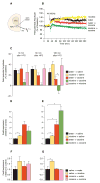
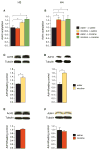
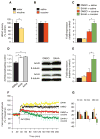

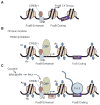
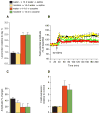
Similar articles
-
Epigenetics of nicotine: another nail in the coughing.Sci Transl Med. 2011 Nov 2;3(107):107ps43. doi: 10.1126/scitranslmed.3003278. Sci Transl Med. 2011. PMID: 22049068 Free PMC article.
-
Nicotine primes the effect of cocaine on the induction of LTP in the amygdala.Neuropharmacology. 2013 Nov;74:126-34. doi: 10.1016/j.neuropharm.2013.03.031. Epub 2013 Apr 15. Neuropharmacology. 2013. PMID: 23597510
-
Prior alcohol use enhances vulnerability to compulsive cocaine self-administration by promoting degradation of HDAC4 and HDAC5.Sci Adv. 2017 Nov 1;3(11):e1701682. doi: 10.1126/sciadv.1701682. eCollection 2017 Nov. Sci Adv. 2017. PMID: 29109977 Free PMC article.
-
[Epigenetic mechanisms and alcohol use disorders: a potential therapeutic target].Biol Aujourdhui. 2017;211(1):83-91. doi: 10.1051/jbio/2017014. Epub 2017 Jul 6. Biol Aujourdhui. 2017. PMID: 28682229 Review. French.
-
Epigenetic landscape of amphetamine and methamphetamine addiction in rodents.Epigenetics. 2015;10(7):574-80. doi: 10.1080/15592294.2015.1055441. Epigenetics. 2015. PMID: 26023847 Free PMC article. Review.
Cited by
-
Offspring of Prenatal IV Nicotine Exposure Exhibit Increased Sensitivity to the Reinforcing Effects of Methamphetamine.Front Pharmacol. 2012 Jun 18;3:116. doi: 10.3389/fphar.2012.00116. eCollection 2012. Front Pharmacol. 2012. PMID: 22719728 Free PMC article.
-
Transgenerational inheritance and its modulation by environmental cues.Curr Top Dev Biol. 2023;152:31-76. doi: 10.1016/bs.ctdb.2022.10.002. Epub 2022 Nov 14. Curr Top Dev Biol. 2023. PMID: 36707214 Free PMC article.
-
Microglial activation increases cocaine self-administration following adolescent nicotine exposure.Nat Commun. 2020 Jan 16;11(1):306. doi: 10.1038/s41467-019-14173-3. Nat Commun. 2020. PMID: 31949158 Free PMC article.
-
Time-dependent changes in nicotine behavioral responsivity during early withdrawal from chronic cocaine administration and attenuation of cocaine sensitization by mecamylamine.Behav Brain Res. 2014 Apr 1;262:42-6. doi: 10.1016/j.bbr.2013.12.051. Epub 2014 Jan 7. Behav Brain Res. 2014. PMID: 24412684 Free PMC article.
-
Regulation of habit formation in the dorsal striatum.Curr Opin Behav Sci. 2018 Apr;20:67-74. doi: 10.1016/j.cobeha.2017.11.005. Epub 2017 Nov 21. Curr Opin Behav Sci. 2018. PMID: 29713658 Free PMC article.
References
-
- Kandel DB. Stages in adolescent involvement with drugs. Science. 1975;190:912–914. - PubMed
-
- Kandel DB, editor. Stages and Pathways of Drug Involvement: Examining the Gateway Hypothesis. Cambridge Univ. Press; Cambridge, England: 2002. pp. 3–15.
-
- Substance Abuse and Mental Health Services Administration, Office of Applied Studies. National Survey on Drug Use and Health, 2009 [Computer file], ICPSR29621-v1. Ann Arbor, MI: Inter-university Consortium for Political and Social Research [distributor]; 2010. Nov 16,
-
- Thomas MJ, Berrier C, Bonci A, Malenka RC. Long-term depression in the nucleus accumbens: a neural correlate of behavioral sensitization to cocaine. Nature Neuroscience. 2001;4:1217–1223. - PubMed
Publication types
MeSH terms
Substances
Grants and funding
LinkOut - more resources
Full Text Sources
Molecular Biology Databases
Miscellaneous

